Peony: Care Guide for Flower
Peonies are among the most cherished flowering plants, known for their lush, fragrant blooms and remarkable longevity. These perennials can thrive for decades with minimal care, making them a staple in many gardens. Their versatility allows them to be used in flower beds, borders, or as stunning cut flowers for arrangements. Peonies bloom in late spring to early summer, producing large, ruffled flowers in various colors, from soft pastels to bold, rich hues. Their striking appearance and ease of maintenance make them a favorite choice for gardeners and floral enthusiasts alike.
Additionally, peonies are deer-resistant and highly adaptable to different climates, thriving in USDA zones 3-8. Their sweet fragrance adds an extra charm to gardens and bouquets. With their incredible lifespan, peonies often become family heirlooms, passed down through generations, making them a meaningful and beautiful choice for any outdoor space. Our gardening blog is a perfect place to find all the information you need!
Why Choose Peonies for Your Garden or Home?
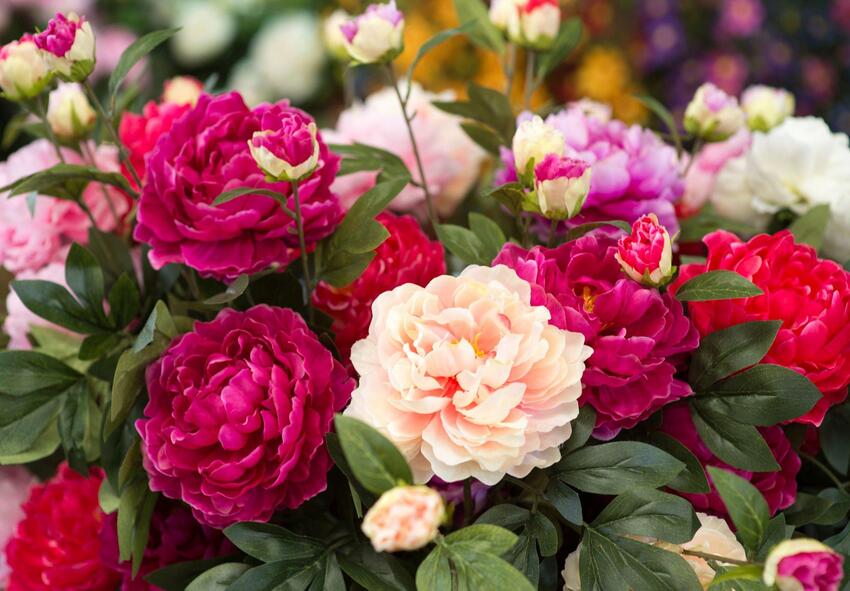
Peonies offer numerous benefits, making them a worthwhile addition to any garden. They are incredibly low-maintenance, requiring little beyond proper planting and occasional care. Once established, peonies are drought-resistant and highly adaptable to different climates, thriving in USDA zones 3-8.
One of the most appealing aspects of peonies is their long blooming period, providing weeks of spectacular flowers every spring. Additionally, their foliage remains attractive throughout the growing season, adding greenery and structure to garden beds. Unlike many other perennials, peonies are highly pest-resistant and rarely affected by diseases, making them an easy choice for beginner gardeners.
Moreover, peonies hold significant sentimental and ornamental value. Their breathtaking blooms make them a popular choice for wedding bouquets, cut flower arrangements, and decorative centerpieces. With their enduring beauty and minimal care requirements, peonies are a timeless investment for both home and garden aesthetics. Beyond their aesthetic appeal, peonies are also pollinator-friendly, attracting bees and other beneficial insects that help promote biodiversity in your garden. Whether planted as a focal point or in mixed flower beds, peonies enhance the visual appeal of any outdoor space while requiring very little effort to maintain. Their ability to thrive for decades makes them a truly rewarding garden addition.
The Most Popular Peony Varieties and Their Characteristics
Peonies come in a wide range of varieties, each with unique colors, shapes, and growth habits. From classic soft pinks to deep reds and rare hybrids, there’s a perfect peony for every gardener’s preference. Some peonies bloom early in the season, while others bloom later, extending the flowering period in your garden. They can be categorized into herbaceous, tree, and intersectional peonies, each with its own distinct growth pattern.
Herbaceous peonies are the most common and die back to the ground each winter before regrowing in spring. Tree peonies have woody stems and produce larger flowers, while intersectional (Itoh) peonies are hybrids that combine the best traits of both.
Additionally, peonies are available in various bloom forms, including single, semi-double, and fully double blooms. The single and semi-double varieties tend to be more resistant to rain damage, while the fully double varieties offer the most luxurious, ruffled petals. Some peonies, like ‘Festiva Maxima,’ feature striking bi-colored petals, while others, such as ‘Bartzella,’ showcase unique yellow tones. By selecting different varieties, you can create a diverse and colorful peony garden that offers stunning blooms throughout the growing season.
Classic Pink Peonies
Pink peonies are among the most beloved varieties, admired for their romantic charm and lush blooms. Some of the most iconic pink peonies include:
- Sarah Bernhardt – A timeless favorite, this double-flowered variety features ruffled, soft pink petals with a delicate fragrance.
- Pink Hawaiian Coral – A semi-double variety with vibrant coral-pink blooms that fade to peach, adding dynamic color to any garden.
Pink peonies symbolize love and prosperity, making them perfect for floral arrangements and wedding bouquets. Their versatility allows them to complement various garden designs, thriving best in sunny locations with well-draining soil. These varieties ensure a stunning floral display year after year.
White and Cream Peonies for an Elegant Look
White and cream peonies exude sophistication, making them an excellent choice for refined garden aesthetics. Some popular varieties include:
- Duchesse de Nemours – A fragrant, fully double white peony with a hint of lemon at the center, perfect for cut arrangements.
- Festiva Maxima – Known for its large, pure white petals accented with crimson streaks, this variety is highly prized.
White and cream peonies add a touch of timeless elegance to gardens and floral arrangements. Their luminous petals contrast beautifully with green foliage, making them a focal point in any landscape. They thrive in full sun and well-drained soil, providing breathtaking blooms year after year.
Red and Burgundy Peonies for a Bold Statement
For those seeking dramatic, eye-catching blooms, red and burgundy peonies are an excellent choice. Notable varieties include:
- Karl Rosenfield – A bold, double-flowered deep red peony with striking, velvety petals and a strong presence in any garden.
- Buckeye Belle – A semi-double, dark red peony with a rich, burgundy hue and golden stamens, adding contrast.
These deep-hued peonies add richness and depth to gardens and floral arrangements. Their striking colors make them a centerpiece in any landscape. Thriving in full sun with well-drained soil, they are resilient and long-lived, offering vivid blooms every spring. Their bold shades are perfect for making a dramatic garden statement.
Exotic and Rare Peony Varieties
For gardeners looking for something unique, exotic peony varieties offer extraordinary blooms. Some rare and remarkable types include:
- Bartzella – A striking intersectional (Itoh) hybrid with large, lemon-yellow blooms and a pleasant fragrance.
- Cora Louise – A semi-double Itoh peony featuring soft lavender petals with a deep magenta center.
These exotic peonies provide unique colors and petal formations not commonly seen in traditional varieties. Itoh peonies, like Bartzella and Cora Louise, offer the best traits of both herbaceous and tree peonies, making them resilient and long-lasting. Tree peonies, such as High Noon, bring a different growth habit and striking visual appeal. With proper care, these rare varieties can become the highlight of any garden.
How to Plant and Grow Peonies Successfully
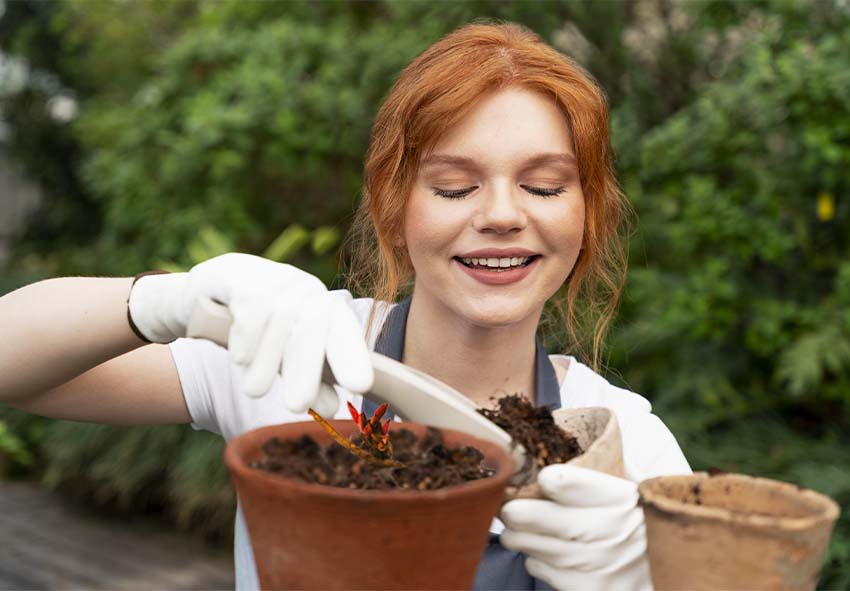
Planting and growing peonies successfully requires proper preparation and peony bulb care. These long-lived perennials thrive in well-draining soil and full sunlight. To ensure healthy growth, it’s important to select quality peony roots, plant them at the correct depth, and provide the right growing conditions. Peonies are best planted in early fall, giving them time to establish strong roots before the next growing season. Once planted, they require minimal maintenance but benefit from occasional watering and fertilization.
Proper spacing between plants is crucial to prevent overcrowding and promote good air circulation. A well-chosen location with at least six hours of direct sunlight per day ensures strong blooms. Peonies also benefit from mulching to retain moisture and regulate soil temperature. After planting, watering should be moderate to avoid waterlogging. Following these steps will help peonies thrive, rewarding gardeners with stunning blooms year after year.
Step-by-Step Guide to Planting Peonies
Follow these steps while planting your peonies:
- Choose a high-quality peony root with 3-5 eyes.
- Select a well-draining, sunny location.
- Dig a hole large enough to accommodate the root system.
- Plant herbaceous peonies 1-2 inches deep; tree peonies should be deeper.
- Water thoroughly and mulch around the base for moisture retention.
Step 1: Choosing a Healthy Peony Root or Bulb
Selecting a healthy peony root is the first step to successful growth. Look for firm, disease-free roots with at least 3-5 growth eyes, as these produce stronger, more vigorous plants. Avoid roots that are small, shriveled, or moldy, as they may struggle to establish themselves.
Larger roots with multiple eyes will produce flowers sooner, typically within a couple of years, whereas smaller roots take longer to mature. Choose peony roots from reputable nurseries to ensure quality and disease resistance. When purchasing, opt for fresh, plump roots without signs of damage or rot.
Peony bulbs should be stored properly before planting if not planted immediately. Keep them in a cool, dry place away from direct sunlight. By carefully selecting and handling your peony roots, you set the foundation for healthy, long-lasting blooms that will grace your garden for decades.
Step 2: Choosing the Right Soil and Location
The right soil and location are essential for growing strong, healthy peonies. These plants thrive in nutrient-rich, well-draining soil with a pH of 6.5-7.0. Avoid heavy clay or overly sandy soils, as they can hinder root development and water retention.
Peonies prefer a sunny location where they receive at least six hours of direct sunlight each day. Insufficient sunlight may result in weak stems and fewer blooms. When choosing a planting spot, ensure it is sheltered from strong winds but has good airflow to prevent fungal diseases.
Before planting, enrich the soil with compost or well-rotted manure to improve fertility. Avoid planting peonies near large trees or shrubs, as these can compete for nutrients and moisture. Preparing the soil and choosing an optimal location will ensure that your peonies develop strong roots and produce abundant flowers season after season.
Step 3: Proper Planting Depth and Spacing
Planting depth and spacing play a crucial role in peony health and bloom production. Herbaceous peonies should be planted with their roots positioned 1-2 inches below the soil surface. Planting them too deeply can prevent flowering, as peonies require a shallow planting depth to bloom properly. Tree peonies, however, should be planted deeper, with the graft union positioned 4-6 inches below the soil surface.
Spacing is equally important to ensure proper airflow and prevent diseases such as botrytis. Peonies should be planted at least 3 feet apart, allowing enough room for growth and preventing overcrowding. If planting multiple peonies, arrange them in a well-spaced pattern to allow each plant to receive adequate sunlight and airflow.
By following the correct planting depth and spacing guidelines, you create an environment where peonies can thrive, leading to lush foliage and an abundance of stunning flowers year after year.
Step 4: Watering After Planting
Proper watering is essential to help newly planted peonies establish strong root systems. After planting, water thoroughly to ensure the soil settles around the roots and eliminates air pockets. However, it is important to avoid overwatering, as peonies dislike soggy conditions.
Peonies require moist but well-drained soil. Watering deeply once a week is generally sufficient, but frequency may vary depending on climate and soil type. During dry periods, provide additional water to keep the soil from drying out completely. Mulching around the base of the plant helps retain moisture and prevents weeds from competing for nutrients.
Avoid watering peonies overhead, as wet foliage can promote fungal diseases. Instead, water at the base of the plant, directing moisture toward the roots. By maintaining the right balance of moisture, peonies will develop strong roots, ensuring healthy growth and vibrant blooms for years to come.
Step 5: Providing the Right Conditions for Growth
Creating the right growing conditions for peonies helps them flourish and produce abundant blooms. Peonies thrive in stable environments where they are protected from extreme weather conditions, including strong winds and heavy frost. Young plants, in particular, benefit from some shelter while they establish themselves.
Mulching around the base of the plant helps retain soil moisture and regulate temperature, especially in regions with harsh winters. Apply a layer of organic mulch, such as shredded bark or straw, but avoid covering the crown too deeply, as this can hinder growth.
In colder climates, peonies can benefit from light winter protection, such as a layer of mulch or straw, to prevent frost damage. Once the risk of frost has passed, remove excess mulch to allow new growth to emerge. By maintaining optimal growing conditions, you ensure that your peonies remain strong, resilient, and capable of producing spectacular blooms season after season.
Essential Peony Care Tips for Healthy Growth
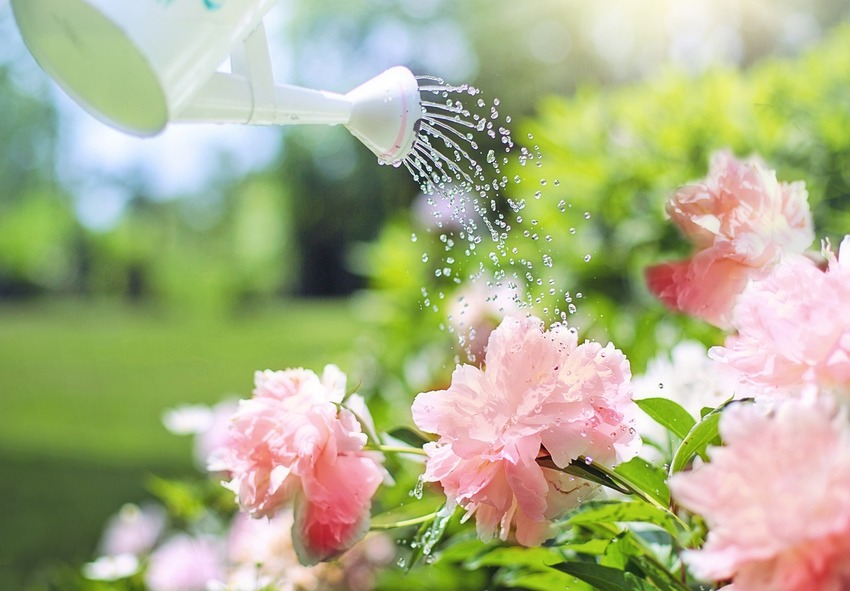
Peonies are resilient and long-lived plants, but proper peony bulb care is essential for optimal growth and blooming. They require full sun, well-draining soil, and a consistent watering routine to flourish. Light exposure is crucial, as peonies need at least six hours of direct sunlight daily to produce abundant blooms. Additionally, maintaining a stable temperature and protecting them from late spring frosts ensures healthy growth.
Peonies with large flowers may require staking or support to prevent bending stems. Deadheading spent blooms encourages further growth and maintains plant vigor. By following these essential care tips, peonies will reward gardeners with stunning, fragrant blooms for years to come.
To learn how to care for peony indoors, it’s essential to mimic their natural environment as much as possible. Place the peony in a spot with at least six hours of indirect sunlight, such as a south or east-facing window. Use well-draining soil and keep it consistently moist, but not soggy. Water the plant deeply when the top inch of soil is dry, being careful not to overwater to prevent root rot. During the growing season, feed your peony with a balanced, water-soluble fertilizer. Good air circulation is also important to help prevent diseases and encourage healthy growth.
How to Care for Peonies After Planting
It’s important to know how to care for peony properly. After planting, ensure peonies receive proper watering, fertilization, and support as needed. Water deeply once a week and avoid wetting the leaves. Apply fertilizer in early spring to encourage growth. Protect young plants from frost and provide structural support to prevent bending stems. Deadhead flowers to prolong the blooming period.
Step 1: Watering Peonies the Right Way
Watering peonies correctly is crucial for healthy growth. These plants prefer deep, infrequent watering rather than frequent shallow watering. Providing a thorough soaking once a week encourages strong root development, making the plant more resilient to drought.
Avoid overhead watering, as wet foliage increases the risk of fungal diseases such as botrytis blight. Instead, direct water at the base of the plant to keep the leaves dry. Ensure the soil remains moist but never waterlogged, as excess moisture can cause root rot.
During hot, dry periods, monitor soil moisture levels and adjust watering accordingly. A layer of mulch around the base of the plant helps retain moisture while preventing weeds. By establishing a proper watering routine, peonies will develop robust roots and produce healthy, vibrant blooms each season.
Step 2: Fertilizing for Strong Growth
Proper fertilization is essential to encourage strong growth and abundant blooms in peonies. Apply a balanced fertilizer, such as 10-10-10, in early spring when new shoots begin to emerge. This provides essential nutrients, including nitrogen, phosphorus, and potassium, which promote healthy root and stem development.
Avoid overusing nitrogen-rich fertilizers, as excessive nitrogen encourages lush foliage at the expense of flower production. Instead, focus on a well-balanced feeding schedule to ensure optimal plant health.
In addition to spring fertilization, a light application of compost or organic matter in the fall helps enrich the soil for the next growing season. Apply fertilizer around the base of the plant, keeping it a few inches away from the stems to prevent root burn. With proper feeding, peonies will reward gardeners with vigorous growth and stunning, long-lasting flowers year after year.
Step 3: Providing Proper Light and Temperature
Peonies thrive in full sun, requiring at least six hours of direct sunlight each day to produce strong stems and vibrant blooms. While they can tolerate partial shade, insufficient sunlight may lead to weak growth and fewer flowers.
Temperature stability is another key factor in successful care of peony. These plants prefer cool to moderate temperatures and can withstand cold winters, making them ideal for USDA hardiness zones 3-8. However, late spring frosts can damage new growth, so it’s essential to provide protection during unexpected temperature drops.
To maintain ideal conditions, plant peonies in a location sheltered from strong winds and frost pockets. Mulching around the base in late fall helps insulate the roots and maintain soil temperature consistency. By ensuring adequate sunlight and protecting against extreme temperatures, gardeners can promote healthy growth and maximize their peonies’ blooming potential.
Step 4: Supporting Tall Stems (If Needed)
Peonies, especially double-flowered varieties, often produce large, heavy blooms that can cause stems to bend or break. Providing proper support helps maintain the plant’s structure and prevents damage.
Garden stakes, peony rings, or grow-through supports should be placed around the plants in early spring before new shoots reach their full height. This ensures the stems grow upright and are adequately supported once blooms appear.
Deadheading spent flowers not only enhances the plant’s appearance but also encourages continuous blooming and redirects energy into root development. Cut back faded blooms just above the first set of leaves to maintain plant vigor.
In addition to structural support, choosing a location protected from strong winds minimizes the risk of stems bending. By implementing proper staking techniques and maintaining a tidy plant structure, peonies will remain healthy, upright, and visually striking throughout the growing season.
How to Encourage Your Peonies to Bloom Year After Year
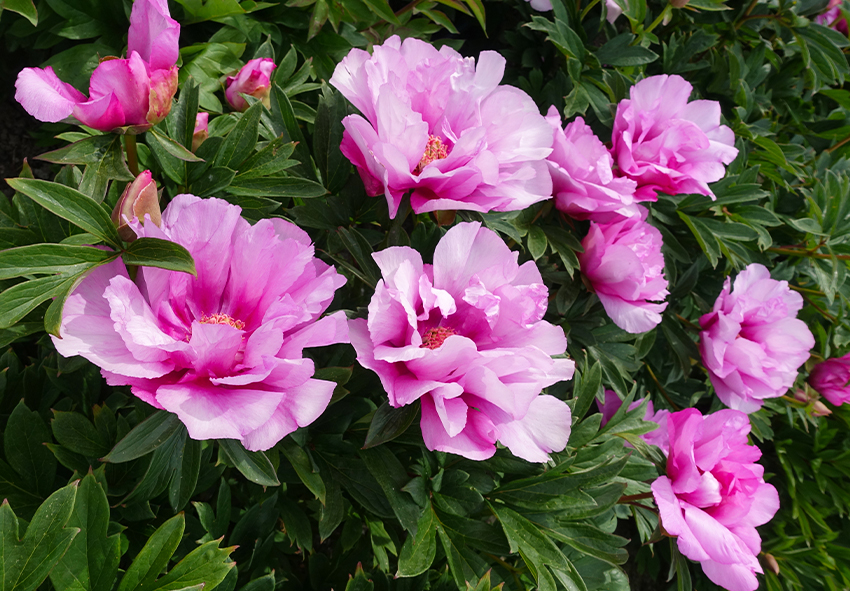
Peonies are beloved for their stunning blooms, but they require proper care to ensure they return year after year with vibrant flowers. One of the most common reasons peonies fail to bloom is improper planting depth—planting them too deep can hinder flowering. Ensuring they receive at least six hours of full sun daily is also essential for optimal blooming. Additionally, peonies benefit from rich, well-drained soil and moderate fertilization to provide the necessary nutrients for strong flower production.
Post-bloom care, winter preparation, and periodic division also play a crucial role in maintaining a peony’s health and productivity. Deadheading spent flowers helps redirect the plant’s energy into root and foliage development, while cutting back foliage in late fall minimizes disease risk. Every 5-10 years, dividing and transplanting peonies helps prevent overcrowding and encourages more prolific blooming. With these essential care steps, peonies can continue to thrive and produce abundant flowers for generations.
Step-by-Step Guide to Ensuring Regular Blooms
To maintain strong blooming, follow these key steps:
- Deadhead spent flowers to help the plant focus on root development.
- Prepare for winter by cutting back foliage in late fall.
- Divide and transplant peonies every 5-10 years to prevent overcrowding.
- Ensure proper planting conditions, including sunlight, soil drainage, and fertilization.
Step 1: Post-Bloom Care (Deadheading)
Deadheading is crucial to maintaining healthy peonies and encouraging consistent blooming. Once the flowers begin to fade, remove the spent blooms by cutting just above the first set of leaves. This practice prevents seed formation, allowing the plant to focus its energy on strengthening its roots and foliage.
In addition to deadheading, removing weak or damaged stems helps promote overall plant vigor. It is important not to remove too much foliage, as the leaves continue to photosynthesize and provide essential nutrients for the next season’s growth.
Deadheading also improves the plant’s appearance, keeping it looking tidy throughout the growing season. For tree peonies, however, deadheading should be done carefully to avoid cutting into the woody stems. Regular maintenance through deadheading not only helps sustain the plant’s health but also results in larger, more robust blooms in the following growing seasons.
Step 2: Preparing Peonies for Winter
Preparing peonies for winter is a key step in ensuring their continued growth and flowering potential. For herbaceous peonies, cut back all foliage to ground level in late fall to prevent fungal diseases from overwintering. This also helps reduce the risk of pests and infections that could damage the plant the following year.
A light mulch layer, such as straw or shredded leaves, can provide insulation during harsh winters, especially in colder climates. However, avoid piling mulch directly over the crown, as this can lead to rot. Tree peonies, on the other hand, should not be cut back entirely—only remove dead or damaged wood.
By preparing peonies for winter, gardeners can protect their plants from extreme temperatures and ensure healthy regrowth in the spring. Proper winter care leads to stronger stems and more abundant blooms when the growing season resumes.
Step 3: Dividing and Transplanting Peonies
Dividing peonies is essential for maintaining healthy plants and encouraging more prolific blooming. Over time, peonies can become overcrowded, leading to fewer flowers and weaker growth. The best time to divide peonies is in early fall when the plant is dormant but still has time to establish roots before winter.
To divide a peony, carefully dig up the root system, ensuring minimal damage to the tubers. Use a sharp knife to separate the root clump into sections, each containing 3-5 eyes (buds). Replant the divisions in well-drained soil at the proper depth—1-2 inches below the surface for herbaceous peonies and slightly deeper for tree peonies.
Water thoroughly after replanting, and provide a light mulch layer for added protection. By dividing peonies every 5-10 years, gardeners can rejuvenate older plants and encourage continuous blooming, ensuring a vibrant and flourishing garden.
Common Problems with Peonies and How to Fix Them
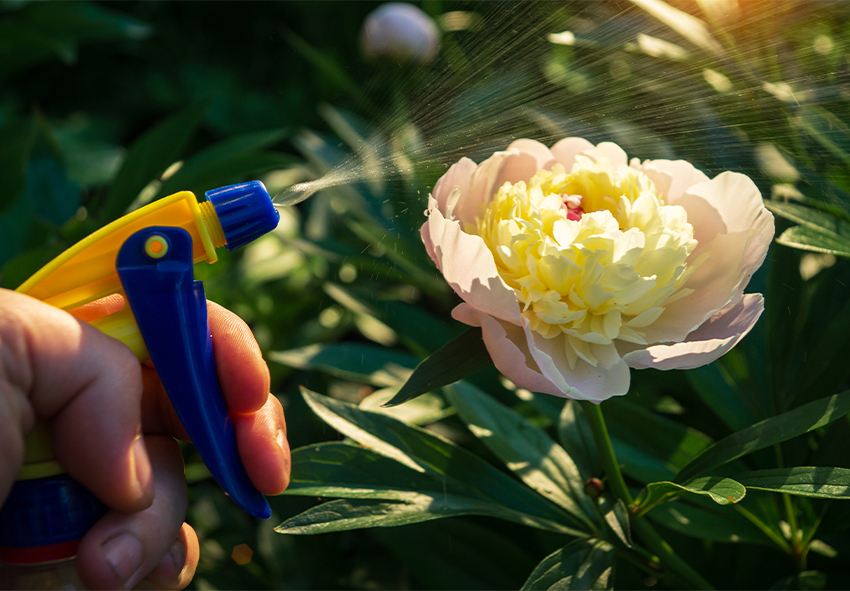
Peonies are generally hardy plants, but they can encounter a few common problems that may affect their health and blooming. Some of the most frequent issues include failure to bloom, yellowing leaves, and weak stems that cause flowers to droop. Understanding the causes and solutions to these problems can help ensure a thriving peony garden.
Peonies may fail to bloom if they are planted too deep, lack sufficient sunlight, or receive excessive nitrogen in their fertilizer. Yellowing leaves often indicate overwatering or poor soil drainage, which can lead to root rot. Additionally, large blooms without adequate support can cause stems to bend and break.
By addressing these issues early with proper planting techniques, appropriate watering, and structural support, gardeners can keep their peonies healthy and beautiful. Regular maintenance, including division and soil amendments, further ensures the longevity and vigor of these stunning perennials.
Troubleshooting Guide
Common peony problems and their solutions:
- Peonies not blooming: Ensure correct planting depth, adequate sunlight, and balanced fertilization.
- Yellowing leaves: Reduce watering and improve soil drainage.
- Peonies falling over: Provide support structures early in the season.
- Pest or disease issues: Remove affected foliage and use appropriate treatments.
Issue 1: Peonies Not Blooming
One of the most frustrating issues for gardeners is when peonies fail to bloom. The most common causes include planting too deeply, insufficient sunlight, or excessive nitrogen in fertilizers. Peonies should be planted with their buds (eyes) no deeper than 1-2 inches below the soil surface. If planted too deeply, they may produce lush foliage but no flowers.
To correct this issue, carefully lift and replant peonies at the correct depth in early fall. Additionally, ensure peonies receive at least six hours of direct sunlight daily, as insufficient light can prevent blooming. Avoid fertilizers high in nitrogen, which promote leaf growth at the expense of flowers. Instead, use a balanced fertilizer (10-10-10) in early spring.
By providing the right planting conditions and proper care, peonies can bloom consistently year after year, rewarding gardeners with their spectacular, fragrant flowers.
Issue 2: Yellowing Leaves or Weak Growth
Yellowing leaves and weak growth in peonies often result from overwatering or poor soil drainage. Peonies prefer well-drained soil, and excessive moisture can lead to root rot, which weakens the plant and causes leaf discoloration.
To remedy this problem, improve soil drainage by adding organic matter such as compost or sand. Avoid watering too frequently; peonies only need deep watering once a week during dry periods. Ensure the planting site is not in a low-lying area where water collects.
If yellowing persists, test the soil for nutrient deficiencies and adjust fertilization accordingly. Peonies benefit from balanced feeding in early spring and after blooming. By maintaining proper watering and soil conditions, gardeners can prevent weak growth and keep peonies healthy and vibrant throughout the growing season.
Issue 3: Peonies Falling Over
Large, heavy peony blooms can cause stems to bend or break, especially after rain. This is a common issue for double-flowered varieties, which produce densely packed petals.
To prevent peonies from falling over, install plant supports or stakes early in the growing season before the buds develop. Peony cages, hoops, or stakes provide structural reinforcement, keeping flowers upright and preventing damage.
Additionally, spacing plants properly (at least 3 feet apart) improves air circulation and reduces the risk of fungal diseases. Deadheading spent blooms also helps direct energy into strengthening the stems rather than producing seeds.
For gardeners facing persistent stem weakness, selecting stronger-stemmed peony varieties, such as single or semi-double bloom types, can be a practical long-term solution. With proper support and care, peonies can maintain their beauty and structure throughout their flowering period.
Propagating Peonies: Growing More Beautiful Blooms
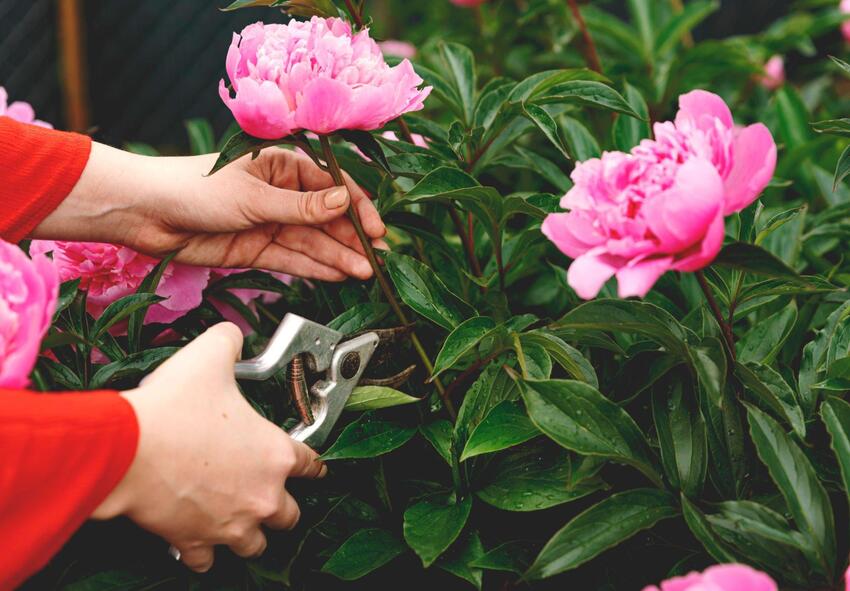
Peonies are cherished for their longevity and stunning blooms, but many gardeners wonder how to propagate them to expand their collection. The two most effective propagation methods are dividing mature clumps and growing peonies from seeds. While division offers quicker results, seed propagation can be rewarding for those who enjoy experimenting with new varieties.
Dividing peony clumps is the preferred method for most gardeners, as it ensures the new plants retain the characteristics of the parent plant. This method is best done in early fall when the plant is dormant. By carefully separating the roots and replanting them, you can create multiple healthy peony plants that will bloom within a year or two.
Growing peonies from seeds, on the other hand, requires patience. Peony seeds take several years to mature into flowering plants, but they offer the chance to develop unique new hybrids. Seed propagation involves collecting and stratifying the seeds to encourage germination.
Both methods allow gardeners to expand their peony collection and enjoy more beautiful blooms in their landscape. Whether opting for division or seed propagation, proper care and patience will yield stunning results, making peonies a rewarding plant to cultivate and share.
How to Propagate Peonies Step-by-Step
There are two primary ways to propagate peonies: division and seed propagation. Division is the quickest and most reliable method, ensuring new plants bloom within a couple of years. Growing peonies from seeds is a slower process but allows for genetic variation. Follow these steps to successfully propagate your peonies.
Step 1: Dividing Peony Clumps (The Best Method)
Dividing peony clumps is the easiest and most effective way to propagate these beautiful flowers. This method is best performed in early fall when the plant is dormant, reducing transplant shock.
Begin by carefully digging around the peony clump, lifting it from the ground without damaging the roots. Shake off excess soil to expose the root system. Use a sharp, sterilized knife to divide the root ball into sections, ensuring each section has at least 3-5 healthy eyes (buds). Trim any damaged or unhealthy roots before replanting.
Replant the divided sections immediately in well-draining, nutrient-rich soil. Position the roots so that the buds sit no more than 1-2 inches below the soil surface. Water thoroughly after planting to help the roots establish. These new plants may take a year or two to bloom but will eventually produce gorgeous, healthy flowers.
Step 2: Growing Peonies from Seeds
Growing peonies from seeds requires patience, as they take several years to mature and bloom. However, it is an exciting method for developing new varieties and unique flower colors.
To start, collect seeds from mature peony seed pods in the fall. Allow the pods to dry before extracting the seeds. Peony seeds require stratification, a process that mimics winter conditions to encourage germination. Place the seeds in a moist paper towel inside a plastic bag and refrigerate them for about three months.
Once stratified, plant the seeds in a well-draining soil mix, about an inch deep. Keep the soil consistently moist but not waterlogged. Germination can take several months, and seedlings will take at least 2-5 years to produce their first blooms.
Although seed-grown peonies take time to mature, they offer the potential for unique, one-of-a-kind flowers. With patience and proper care, seed propagation can be a fulfilling way to grow peonies.
Frequently Asked Questions (FAQs) about Peonies
1. Can peonies grow indoors, and what care do they need?
Peonies can be grown indoors, but they require a cold dormancy period to bloom properly. Choose a large pot with well-draining soil and place it in a bright location with at least 6 hours of sunlight. Water moderately, keeping the soil slightly moist but not soggy. After the growing season, allow the plant to experience a cold winter by placing it in a cool, dark area for at least 6–8 weeks.
2. How often should I water peonies?
Peonies need deep but infrequent watering. In the garden, water them once a week, providing about 1–2 inches of water. During hot or dry spells, increase watering slightly. Avoid overwatering, as peonies dislike sitting in wet soil. For potted peonies, ensure good drainage and let the top inch of soil dry out before watering again. Overwatering can cause root rot, so always check soil moisture before adding more water.
3. What is the best fertilizer for peonies?
Peonies benefit from a balanced, slow-release fertilizer such as 10-10-10 applied in early spring when new growth appears. Avoid high-nitrogen fertilizers, which encourage leafy growth over blooms. A second application can be added after blooming to support root development. Organic options like compost or bone meal can also improve soil quality.
4. Can peony bulbs be ordered from your online store?
Our online store Dutch-bulbs.com offers a wide selection of peony bulbs in various colors, making it easy for you to add these beauties to your garden. We source our bulbs from reputable growers to ensure you receive high-quality specimens. Just browse our online catalog, select your preferred varieties, and order your dutch bulbs.
5. How do I prepare peonies for winter?
In late fall, cut back herbaceous peonies to about 2 inches above the ground to prevent disease and encourage healthy growth in spring. Apply a light layer of mulch, especially in colder climates, to protect roots from freezing temperatures. Avoid heavy mulching, as peonies prefer well-aerated soil. For potted peonies, move them to a sheltered, unheated area like a garage to ensure they experience a natural dormancy period.
Published: 01.04.2025
